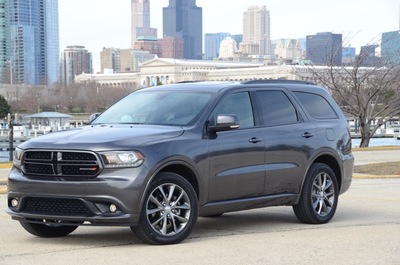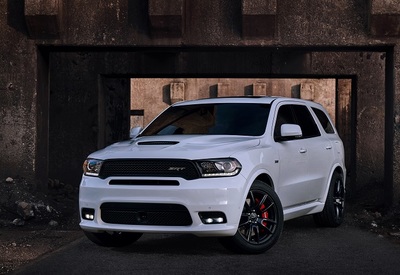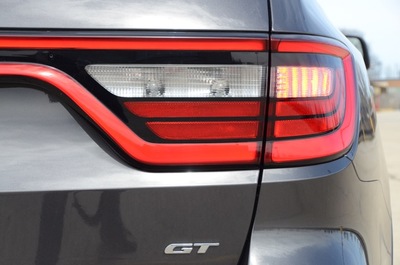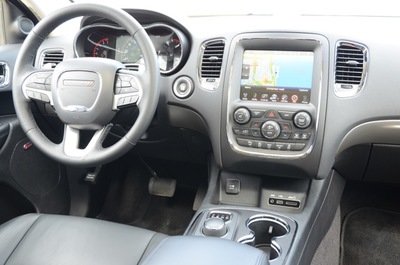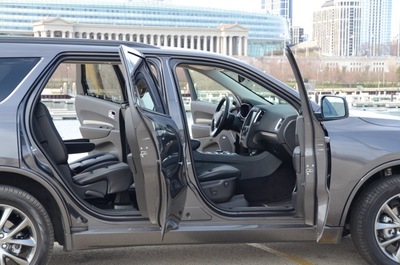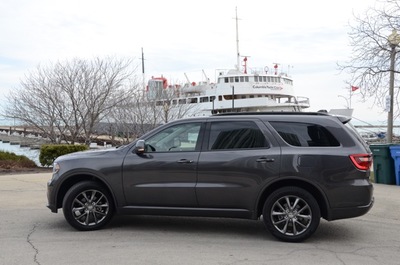2017 Dodge Durango GT Review - Refined and Rugged By Larry Nutson
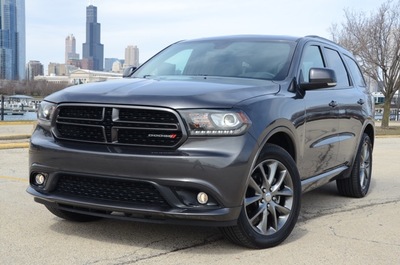 |
2017 Dodge Durango GT Refined and rugged
 4 Star Rating From The Auto Channel
4 Star Rating From The Auto Channel
By Larry Nutson
Senior Editor and Bureau Chief
Chicago Bureau
The Auto Channel
Dodge’s Durango has been around since the 2011 model year. For 2017 the high-volume, most-sold model now carries the GT moniker, instead of the former Limited badge. I guess we could say this is a bit of an assertion of Dodge’s overall position in the market place as a performance brand.
I last drove the Durango about a year ago and was looking forward to getting behind the wheel again for two reasons. First, I had a road trip planned from Chicago to Southeast Michigan and the Durango’s large 24.6 gallon fuel tank would make for no refueling along the way.
Secondly, later this year Dodge will roll out the new Durango SRT that was first revealed at the 2017 Chicago Auto Show in February. Dodge says it’s the "Dodge Charger of the Full-size SUV Segment."
The new 2018 Dodge Durango SRT will be the most powerful three-row SUV with its 475-horsepower 392-cubic-inch HEMI V-8 engine. Dodge says it’s the fastest and most capable three-row SUV with a National Hot Rod Association (NHRA)–certified quarter-mile time of 12.9 seconds and capable of 0-60 miles per hour (mph) acceleration in 4.4 seconds. While at the same time, the Durango SRT can out-haul every three-row SUV on the road with best-in-class towing capability of 8,600 pounds, according to Dodge.
The Durango comes in rear-wheel or all-wheel drive. It’s available in SXT, GT, Citadel and R/T trims. There are two engines to choose from both paired with an eight-speed automatic transmission.
There’s the 3.6-liter Pentastar V-6 engine rated at 290 horsepower and 260 lb.-ft. of torque, with a towing capability of 6,200 pounds. Or, you can chose the 5.7-liter Hemi V-8 engine that produces 360 horsepower and 390 lb.-ft. of torque with a towing capability of 7,400 pounds. The Hemi is optional on the Citadel and standard on the R/T.
With standard five-passenger seating, optional seven-passenger seating and second-row captain’s chairs available on all models, the Durango can be equipped to suite most every personal household need.
Prices start at $29,995 for the rear-drive SXT and climb to $44,695 for the R/T with all-wheel drive.
The GT I drove was equipped with AWD and had a base MSRP of $40,095. Options brought the total to $48,765.
I’m sure you’ve heard a lot of talk about the new driver-assistance safety features that are offered on new vehicles today. Durango is available with a full array of this equipment that, in my view, is very much worth the extra cost. The GT I drove was equipped with the standard rear back-up camera and ParkSense Rear Park Assist with Stop. Also equipped was the optional Blind Spot and Cross Path Detection.
It’s not always that I get to experience all the features of a vehicle while driving. Some features only come into operation under certain conditions. Well, I got to experience the rear park assist with stop feature. And, it saved me from my mis-judgment while backing into my usual parking spot. I was off-line a bit, momentarily distracted at the same time and headed right into the side of the vehicle next to me. The stop function came in to play and stopped the Durango short of contact.
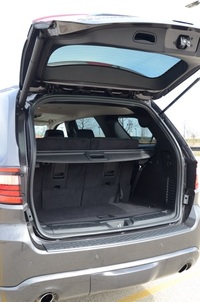 |
Think about it. It saved damage to two vehicles, an insurance claim, paying the deductible, the inconvenience of getting repairs and all the other stuff that goes with it.
The full suite of driver-assistance safety features are offered on the R/T and Citadel in the Technology Group. Its includes Adaptive Cruise Control with Stop, Forward Collision Warning with Active Braking, Advanced Brake Assist, LaneSense Lane Departure Warning with Lane Keep Assist, Blind-spot Monitoring and Rear Cross Path detection systems.
The 2016 Durango I drove had this equipment. My wife was a reluctant passenger as kept both feet on the floor while I demonstrated adaptive cruise control with stop.
About that road trip I mentioned. On my interstate run from Chicago to the Detroit suburbs the Durango achieved 22-23 mpg. That’s fairly good considering the prevailing traffic moves at plus-70mph speeds. EPA test cycle ratings are 21 mpg combined, with 25 highway mpg and 18 city mpg.
The Durango’s V6 engine and eight-speed automatic work well together. There’s lots of elasticity along with good acceleration and highway merging, A fast merge from an interstate rest area into traffic moving at 75mph is done safely and with ease. The V6 does work a bit hard from time to time, but I wouldn’t opt for the V8 Hemi unless I really needed the load and towing capacity. Then you just take whatever you get for fuel consumption while getting the job at hand done.
New for 2017, you can view a towed trailer while the Durango is moving through the rear-mounted camera in models equipped with the 8.4-inch Uconnect touchscreen.
The Durango handles cargo well, especially with the third seat row folded to open up 47 cuft. Fold the second row and you have 85 cuft.
My GT media-loan Durango had the optional second-row captains chairs. Which, by the way, also had a heated-seat feature. I’ve had a number of SUVs when our two offspring were younger and I always liked the two center seats to give them each their own space.
You can learn more about the 2016 Dodge Durango at www.dodge.com. Comparisons to other large SUVs can be made right here on www.TheAutoChannel.com.
All-in-all the Durango is quite comfortable and easy to maneuver. Yes, it’s large but not too. SUVs are about hauling lots of people and stuff and perhaps periodically towing a trailer. The Durango delivers on all the reasons for having an SUV.
© 2017 Larry Nutson, the Chicago Car Guy



